Stone Walkway Installation Fort Worth
Stone Walkway Installation in Fort Worth
So you need proper pathway connecting areas of your property that's functional and attractive, right? That's what stone walkway installation does. Basically creating defined walking surface using natural stone or pavers—connecting house to driveway or patio, providing dry stable path through landscape, adding visual interest to property, preventing muddy tracks and worn grass paths. We install stone walkways all over Fort Worth—older homes in Ridglea replacing deteriorated concrete walks with natural stone, properties in Tanglewood creating elegant pathways through gardens, newer houses in Walsh Ranch upgrading basic builder sidewalks. Clay soil here causes problems with concrete—cracks from soil movement, settling creating uneven surfaces, moisture causing deterioration. Stone walkways handle clay soil better—individual pieces move independently without cracking, proper base prevents settling, natural appearance ages gracefully rather than looking deteriorated.
Here's the thing about stone walkways in Fort Worth—done right they last decades looking beautiful and providing solid walking surface, but done wrong they settle unevenly, shift apart, grow weeds constantly, or fail within few years. Our clay soil expands and contracts dramatically causing movement, improper base preparation leads to settling and failure, inadequate edge restraint allows walkway to spread apart, wrong installation methods create surface that's uneven or unstable. We've rebuilt countless stone walkways done wrong—inadequate base causing severe settling, no edge restraint letting pavers shift and separate, improper drainage creating standing water, wrong stone choices or installation creating tripping hazards. Installing stone walkway requires proper base preparation handling clay soil, appropriate edge restraint, correct installation methods, quality materials suitable for walking surface.
We handle complete stone walkway installation—design and layout planning, proper excavation and base preparation, edge restraint installation, stone laying with appropriate spacing, finishing and sealing. Not just dig shallow trench and drop stones in. We design walkways working for traffic patterns and property aesthetics, prepare proper base preventing settling, install everything creating stable long-lasting surface.

Design and Planning Process

Understanding walkway purpose and traffic—determining primary routes needing pathways, evaluating traffic levels and usage, planning widths appropriate for use, considering accessibility requirements, thinking about connection points. Before designing anything we discuss how walkway will be used. Main path from driveway to front door? Secondary path to garden area? Service route to side yard? Different uses need different approaches—main entries need wider paths handling simultaneous traffic, secondary paths can be narrower, service routes need durable surface but less aesthetic emphasis. We plan walkways matching actual usage patterns.
Route planning and layout—determining best pathway route, considering slopes and drainage, avoiding tree roots and obstacles, planning curves or straight runs, minimizing impact on existing landscape. Walkway route affects both function and appearance. Straight paths are most direct but can look harsh. Gentle curves create more natural appearance and work with landscape contours. Route must avoid major tree roots—cutting large roots damages trees and roots lift pavers over time. We plan routes working with property—following natural contours where possible, avoiding obstacles, creating functional attractive paths.
Width and surface planning—selecting appropriate pathway width, determining if single-file or side-by-side, planning surface material and pattern, considering texture for traction, thinking about appearance and budget. Width is fundamental decision. Minimum 3 feet allows single-file walking, 4 feet is more comfortable, 5 to 6 feet allows two people walking side-by-side. Main entries typically 4 to 5 feet minimum. Secondary paths can be narrower. Surface material affects appearance and cost—flagstone is premium natural appearance, pavers are uniform and economical, decomposed granite is budget option. We recommend widths and materials appropriate for use and budget.
Material selection for application—choosing between flagstone and pavers, considering stone types and colors, evaluating thickness for walking surface, thinking about texture and slip resistance, understanding material characteristics. Material choice affects appearance, durability, and cost. Natural flagstone provides organic irregular appearance—each piece unique, various colors available, premium look. Concrete or natural stone pavers offer uniform size making installation easier, various patterns possible, generally more economical. Stone must be appropriate thickness for walking—minimum 1.5 to 2 inches, thicker for heavy traffic. Texture matters—smooth stone can be slippery when wet, textured surface provides traction.
Drainage and slope considerations—planning proper slope for water runoff, ensuring walkway doesn't create drainage problems, considering how water affects surface, planning edge drainage, thinking about complete water management. Walkways affect property drainage—must slope for water runoff, shouldn't create dams blocking natural flow, edges need drainage preventing erosion. We plan drainage carefully—walkway slopes away from house, cross-slope prevents water running length of path, edges allow water movement, overall design works with property drainage.
Professional Installation Process
Excavation and base preparation—removing grass and soil to proper depth, excavating level bottom, removing soft spots or unsuitable material, creating proper depth for complete base assembly, planning for final surface height. Excavation is foundation of entire walkway—must be proper depth accommodating base material plus stone thickness, resulting in finished surface at intended height. We excavate carefully—appropriate depth for complete assembly, level bottom, soft spots removed and filled with compactable material. Excavation depth depends on base requirements and stone thickness—typically 8 to 12 inches total.
Base material installation and compaction—installing crushed stone base layer, compacting thoroughly in lifts, creating stable foundation, ensuring proper depth and grade, building solid platform preventing settling. Base is critical—provides stable foundation preventing settling and movement. We install crushed stone base—typically 4 to 6 inches depending on soil conditions, compact in 2-inch lifts to proper density, create level stable surface. Base must be thoroughly compacted—inadequate compaction allows settling causing uneven surface. We use proper equipment ensuring solid compaction throughout base.
Edge restraint installation—installing permanent edging containing walkway, using appropriate materials for application, securing edge restraint properly, creating stable boundary preventing spreading, planning for curves or straight runs. Edge restraint is essential—prevents pavers or stones from shifting apart over time. Various options—plastic edge restraint for pavers, stone soldier course for formal appearance, concrete edge for permanent containment. Must be installed before laying walkway surface—provides stable boundary to work against. We install edge restraint appropriate for walkway style, secured properly preventing movement.
Setting bed preparation—installing sand or stone dust layer, screeding to proper level and slope, creating smooth consistent surface, ensuring correct depth for stone thickness, maintaining proper grade for drainage. Setting bed provides final leveling layer and allows minor adjustments during stone installation. Sand or stone dust—typically 1 inch thickness, screeded perfectly level or to proper slope, consistent depth throughout. Setting bed must be proper depth—too thick and pavers can settle, too thin and you can't achieve proper level. We screed setting bed carefully creating ideal surface for stone installation.
Stone laying and spacing—placing stones with appropriate joint spacing, maintaining consistent reveals, checking level constantly, adjusting as needed, creating stable uniform surface, following planned pattern. Stone installation requires care and skill—each piece placed level, appropriate spacing maintained, surface checked constantly ensuring uniformity. Flagstone installation is more complex than pavers—irregular shapes require fitting, thickness variations need accommodation. We install stone carefully—proper spacing, consistent surface height, stable placement, attractive pattern. Experience makes difference—knowing how stones fit together, achieving good pattern, working efficiently.
Jointing and finishing—filling joints with appropriate material, sweeping sand or polymeric sand into joints, compacting surface, cleaning stones, sealing if appropriate, completing professional installation. Joint filling stabilizes surface—keeps stones from shifting, prevents weed growth, completes finished appearance. Sand is traditional—simple, allows drainage, easy to maintain. Polymeric sand hardens when wetted—better weed prevention, more stable, higher cost. We fill joints properly, compact surface settling stones into base, clean thoroughly, seal stone if desired for protection and appearance enhancement.
Stone and Material Options
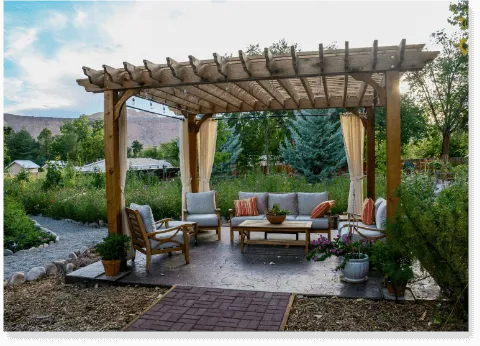
Natural flagstone characteristics—irregular shapes creating organic appearance, various stone types and colors available, thickness variations requiring skill, premium natural look, higher material and labor cost. Flagstone is classic walkway material—each piece unique, natural appearance, ages beautifully. Oklahoma flagstone is common in Fort Worth—tan and rust colors, relatively economical. Pennsylvania bluestone provides gray-blue color, more expensive. Texas limestone offers cream and tan tones. Each piece is different requiring fitting during installation—more labor-intensive than uniform pavers but creates beautiful organic result.
Concrete and natural stone pavers—uniform sizes simplifying installation, various patterns possible, wide range of styles and colors, consistent thickness, typically more economical than flagstone. Pavers offer uniformity—rectangular or square shapes, consistent thickness, various sizes and colors. Installation is simpler than flagstone—uniform pieces fit together in planned patterns. Can create different looks—herringbone pattern, running bond, basket weave, random patterns. Natural stone pavers—travertine, granite, sandstone—provide natural material in uniform format. Concrete pavers are economical offering many styles mimicking natural materials.
Gravel and decomposed granite paths—using small crushed stone as walking surface, most economical option, informal appearance, excellent drainage, requires edge containment and periodic maintenance. Gravel or decomposed granite creates informal pathway—loose material contained by edging, drains extremely well, comfortable walking surface when properly installed. More casual appearance than solid stone. Requires maintenance—periodic adding material, raking smooth, controlling weeds. Works great for informal garden paths, less appropriate for main entries or formal settings. We install gravel paths with proper base and edge containment creating stable surface.
Stepping stone pathways—using individual stones with spacing between, creating casual informal path, grass or groundcover between stones, lower material cost, appropriate for lighter traffic. Stepping stone paths use individual flagstones placed with gaps—grass or groundcover grows between stones, less formal appearance, uses less stone. Works for secondary paths through gardens, lighter traffic areas. Spacing must be appropriate for comfortable stride—typically 18 to 24 inches between stone centers. We position stepping stones for natural walking rhythm, proper spacing, stable installation.
Mixed material combinations—combining different stone types, using pavers with flagstone borders, creating patterns with multiple materials, adding visual interest, designing custom appearances. Combining materials creates custom looks—paver field with flagstone border, alternating stone types in patterns, mixing sizes for interest. Requires careful planning and installation—different materials have different characteristics, transitions must work functionally and aesthetically. We design and install mixed material walkways creating cohesive attractive results.
Base Preparation and Stability
Understanding Fort Worth clay soil—accounting for expansion and contraction, planning for soil movement, ensuring adequate base preventing settling, using proper materials and methods. Clay soil is challenging for walkway installation—expands when wet, contracts when dry, causes significant movement. Proper base is critical—adequate depth of compactable material creating stable platform, isolation from clay soil movement, proper compaction throughout. We understand clay behavior, prepare bases preventing problems—deep enough base, thoroughly compacted, materials handling movement without transmitting it to walkway surface.
Base depth and material selection—determining proper base depth for conditions, using appropriate crushed stone, ensuring adequate load distribution, planning for drainage through base, creating stable foundation. Base depth depends on soil conditions and expected traffic—typically 4 to 6 inches minimum, more for poor soil or heavy use. Crushed stone base material—angular stone that compacts solidly, drains well, doesn't shift. We use proper depth and materials for conditions—deeper base in poor soil, adequate material everywhere creating stable foundation.
Compaction methods and importance—compacting base in lifts, using proper equipment, achieving adequate density, preventing future settling, creating solid platform. Compaction is critical—inadequately compacted base settles causing uneven surface. Must compact in lifts—2 to 3 inches at a time, each lift thoroughly compacted before adding more. We use proper compaction equipment—plate compactor for walkways, achieving proper density throughout. Shortcuts in compaction cause problems later—settling, uneven surface, structural failure.
Geotextile fabric applications—using fabric separating base from soil, preventing soil migration into base, maintaining base integrity over time, especially important in clay soil. Geotextile fabric between clay soil and base material prevents soil migrating into base—clay particles working up into crushed stone reduces drainage and stability. Fabric maintains separation ensuring base performs properly long-term. Not always necessary but often beneficial in Fort Worth clay conditions. We use fabric when appropriate providing long-term stability.
Drainage integration and management—ensuring base drains properly, planning for water movement through and under walkway, connecting to overall site drainage, preventing water accumulation causing problems. Base must drain—standing water causes settling and frost heaving, undermines stability. Crushed stone base drains well if not contaminated with fines. We plan walkway drainage as part of overall site water management—water drains through base, moves away from walkway area, doesn't accumulate causing problems.
Edge Restraint and Containment
Importance of proper edge restraint—preventing walkway from spreading apart, maintaining joint widths, keeping surface stable, essential for long-term integrity, not optional component. Edge restraint is absolutely essential—without it pavers or stones gradually shift apart, joints widen, surface becomes unstable. Many failed walkways have inadequate or missing edge restraint. Must be installed before laying walkway surface, secured properly preventing movement. We never skip edge restraint—it's critical component not optional extra.
Plastic edge restraint systems—using manufactured plastic edging, installing with spikes into base, good for paver applications, economical and effective, less visible than other options. Plastic edge restraint works well for paver walkways—flexible for curves, secured with spikes into base, holds pavers firmly. Not beautiful but can be hidden by mulch or plantings. Economical effective solution for many applications. We install plastic edging properly—tight against pavers, secured every 12 inches, proper depth and position.
Stone soldier course edging—using pavers on edge as border, creating visible attractive edge, more expensive but nice appearance, appropriate for formal installations. Soldier course uses pavers stood on edge creating visible border—defines walkway edge, looks finished and intentional, provides solid restraint. Costs more—uses additional material, more labor installing—but creates attractive result. Appropriate for formal walkways where edge is part of design. We install soldier course level and straight, properly secured, creating clean professional edge.
Concrete edge restraint—pouring concrete haunch along edges, permanent stable containment, strongest option, typically hidden below surface, appropriate for heavy use or problem conditions. Concrete edge is ultimate restraint—permanent, immovable, handles any conditions. Poured along walkway edges, typically hidden below surface and behind edging material. Labor-intensive and expensive but provides maximum long-term stability. Used where conditions demand strongest restraint or where walkway must handle heavy loads. We pour concrete edging properly—adequate width and depth, reinforced if needed, creating permanent containment.
Natural stone edging—using fieldstone or cut stone as border, creating organic appearance, blending with natural stone walkways, more labor to install, beautiful rustic result. Stone edging complements natural stone walkways—flagstone path with fieldstone border creates cohesive appearance. Stones must be stable—set in concrete or deep enough not shifting. More artistic installation requiring fitting and positioning. Creates beautiful edge blending with walkway—especially appropriate for natural gardens or rustic settings.
Why Professional Installation Matters
Proper base preparation preventing failure—ensuring adequate depth and compaction, using appropriate materials, preventing settling and movement, creating stable foundation lasting decades. Base preparation separates successful walkways from failures. Professional installation ensures proper excavation depth, appropriate base materials, thorough compaction, creating foundation that doesn't settle or shift. DIY installations often have base problems—inadequate depth, poor compaction, wrong materials—causing failures within few years. We prepare bases correctly creating stable platforms lasting decades.
Edge restraint installation and importance—installing proper containment preventing spreading, securing restraint adequately, ensuring long-term stability, understanding restraint is essential not optional. Many DIYers skip or inadequately install edge restraint—causes walkway failure as stones shift apart. Professional installation includes proper restraint—appropriate type for application, installed securely, providing long-term containment. We understand restraint is essential, never skip it, install it correctly.
Installation quality and craftsmanship—laying stones level and stable, maintaining proper spacing, creating attractive patterns, achieving professional appearance, skill from experience. Installation quality makes enormous difference—professional stone work is level, properly spaced, attractive pattern, looks intentional and finished. DIY installation often looks amateur—uneven surface, inconsistent spacing, poor pattern choices, joints too wide or irregular. Experience matters—knowing how stones fit, working efficiently, achieving quality results.
Drainage planning preventing problems—ensuring proper slope and water management, planning surface and subsurface drainage, preventing standing water, thinking about complete drainage system. Professional installation considers drainage thoroughly—walkway slope, base drainage, edge drainage, overall site water management. DIY installations often have drainage problems—water pools on surface, poor slope, drainage not considered. We plan and execute complete drainage preventing water issues.
Longevity in Fort Worth conditions—using appropriate materials and methods for climate, construction handling clay soil behavior, quality lasting in weather exposure, walkways lasting decades not years. Fort Worth conditions challenge walkways—clay soil movement, temperature extremes, moisture cycles. Professional installation uses materials and methods proven locally—appropriate base for clay, proper compaction, quality materials, techniques handling our conditions. Walkways should last 20-plus years with minimal maintenance—not fail after few seasons because materials or installation were inadequate.
Frequently Asked Questions
How much does stone walkway installation cost in Fort Worth?
Depends on materials, size, and site conditions honestly. Basic concrete paver walkway might run $15 to $25 per square foot installed. Natural flagstone walkway typically $25 to $40 per square foot depending on stone type and installation complexity. Simple 3-foot wide, 20-foot long walkway would be roughly $900 to $2,400 depending on materials. Difficult access, poor soil requiring extra base work, complex patterns or mixed materials—all increase cost. We provide detailed quotes after assessing your property and understanding your preferences.
Flagstone or pavers—which is better?
Depends on priorities honestly. Flagstone provides natural organic appearance—each piece unique, beautiful aging, premium look—but costs more for materials and labor, thickness variations complicate installation. Pavers offer uniformity—consistent size and thickness, various patterns possible, generally more economical, simpler installation. Many people prefer flagstone appearance for main entries and formal areas, use pavers for secondary paths or where budget is priority. We discuss pros and cons helping you choose what works for your situation and budget.
How long does stone walkway last?
Properly installed walkway lasts 20 to 30-plus years with minimal maintenance. Natural stone essentially lasts indefinitely—stone itself doesn't deteriorate. Concrete pavers last decades with quality products. What fails is installation—inadequate base causes settling, missing edge restraint allows spreading, poor drainage creates problems. Professional installation with proper base, edge restraint, and drainage should last decades with just occasional joint sand replenishment and cleaning. Cheap installation might fail within 5 to 10 years requiring rebuilding.
Can stone walkway be installed over existing concrete?
Sometimes yes depending on concrete condition. If existing concrete is solid, stable, properly sloped—can install pavers or thin stone over it using modified setting methods. Saves excavation and disposal costs. If concrete is badly cracked, settling, or poorly sloped—better removing it and starting fresh with proper base. We assess existing concrete honestly—advise if overlay will work or if removal is better long-term solution. Overlay saves money short-term but only works if existing surface is adequate.
What maintenance does stone walkway require?
Minimal with proper installation. Occasional sweeping removing debris, periodic joint sand replenishment, weed control if needed, cleaning stubborn stains, possible resealing every few years depending on stone type. Polymeric sand joints need less maintenance than regular sand. Weeds occasionally appear in joints—pull or treat as needed. Stone might need pressure washing or stain treatment periodically. Overall maintenance is minimal—far less than concrete which cracks and requires repair or replacement. We provide maintenance guidance specific to your materials.
Call us for professional stone walkway installation throughout Fort Worth. We've installed walkways all over—from simple paver paths to elaborate natural stone entries with custom patterns. Your property deserves walkways that are functional, stable, beautiful addition connecting spaces and enhancing landscape. We design walkways working for traffic patterns and aesthetics, prepare proper bases in clay soil, install edge restraint creating stability, lay stone carefully creating level attractive surface. Walkways you'll walk on comfortably for decades—not settling, shifting, or requiring constant maintenance. Fort Worth clay soil is challenging—let us install walkways that handle it properly.
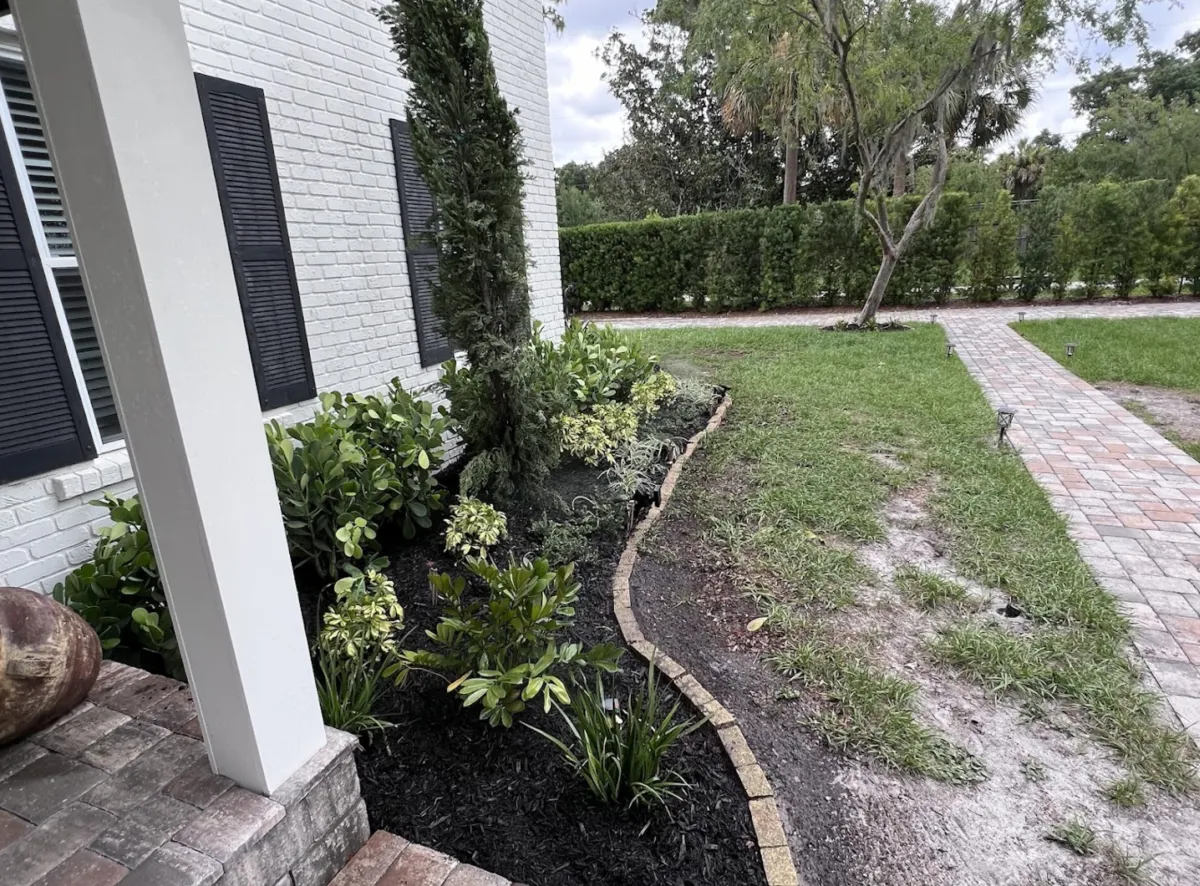

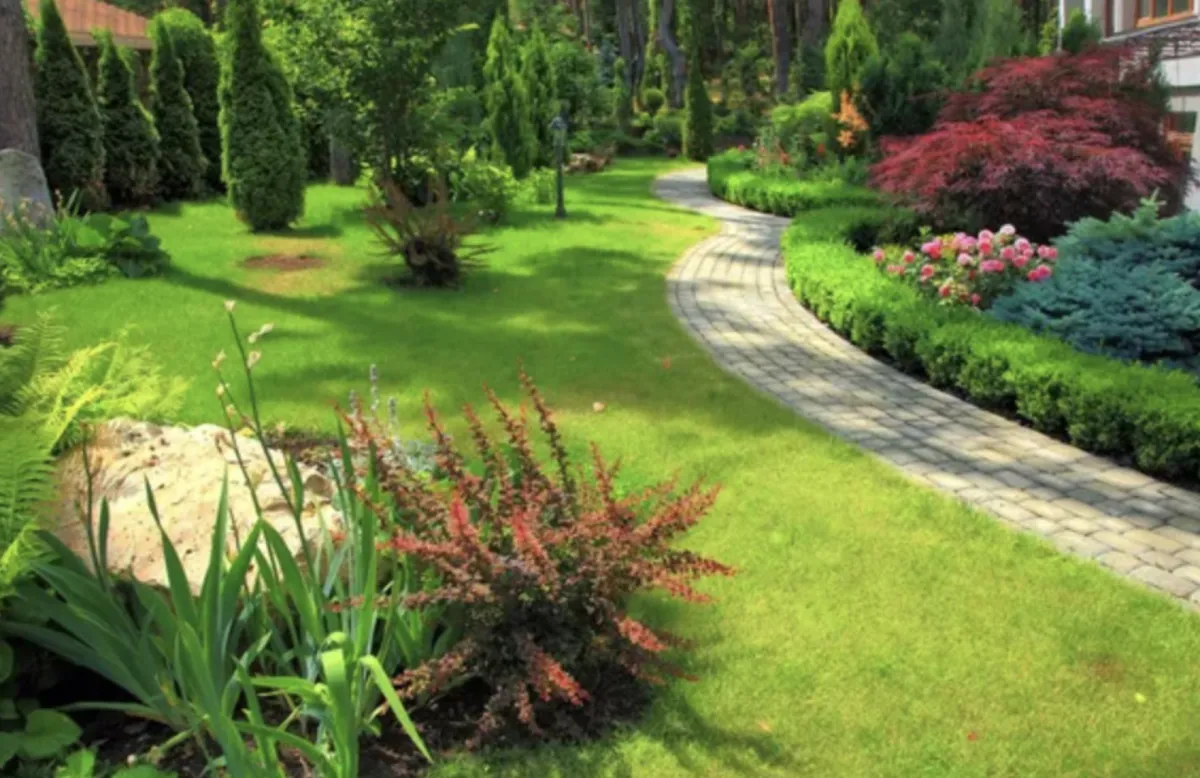
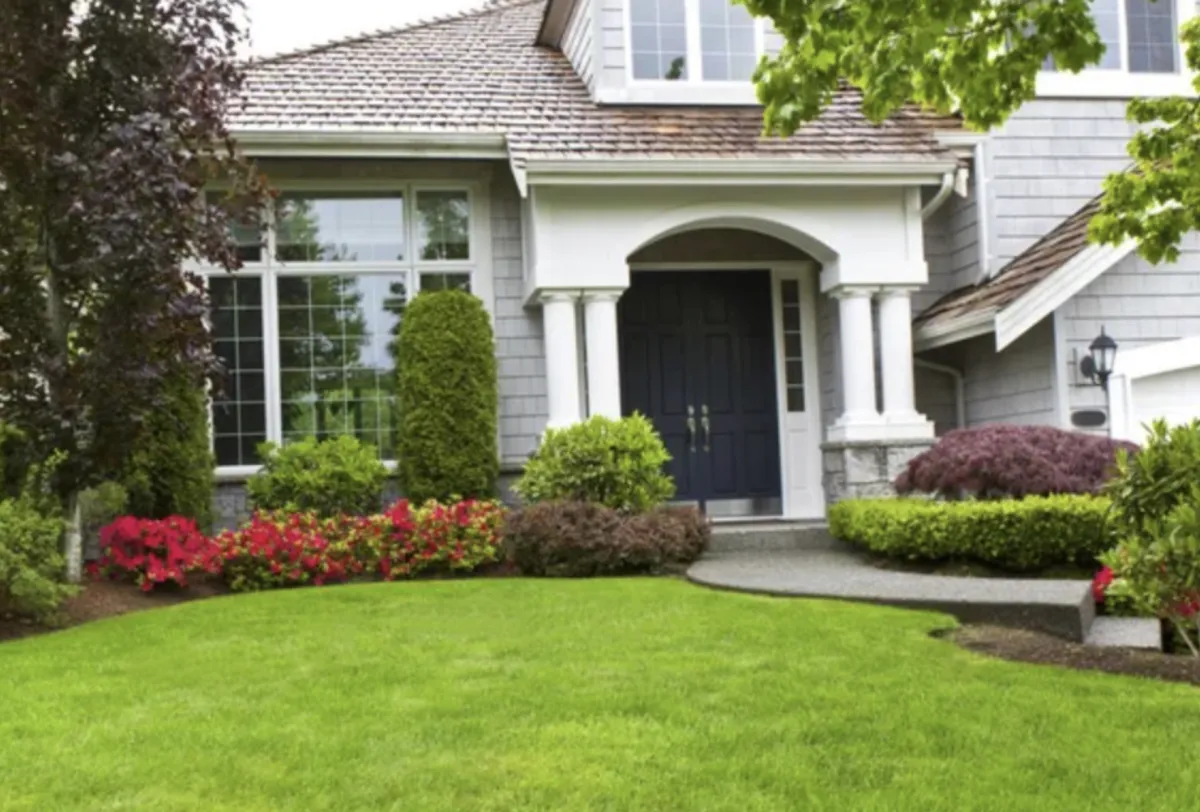
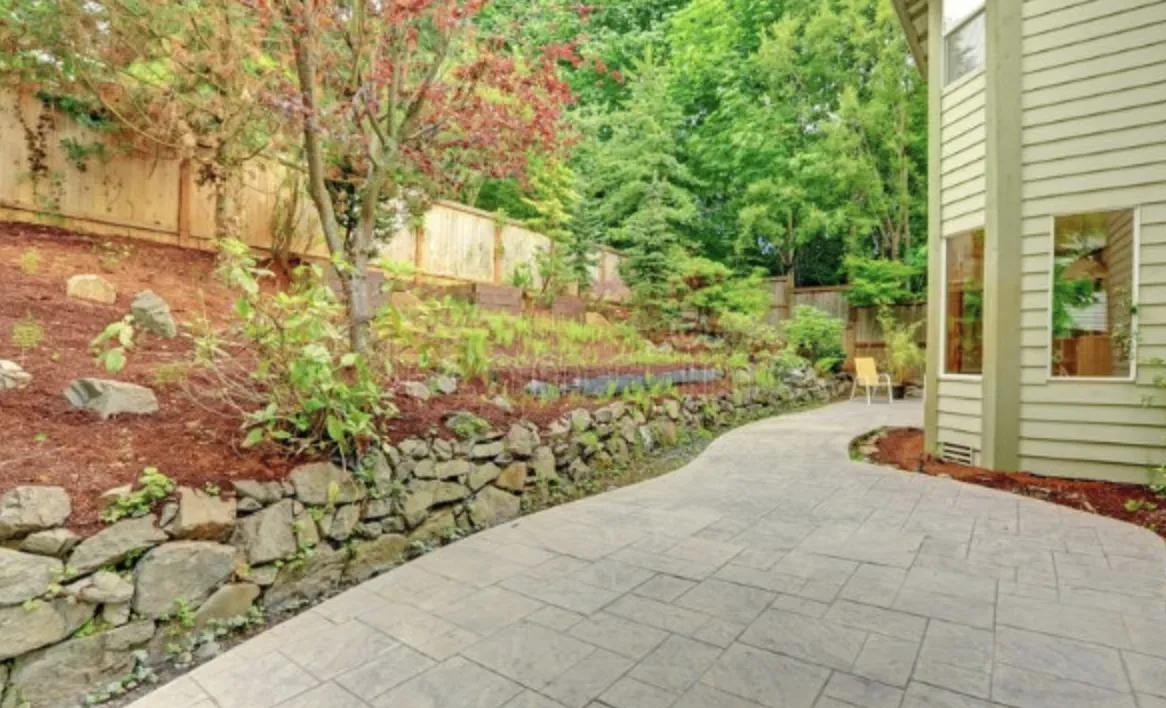

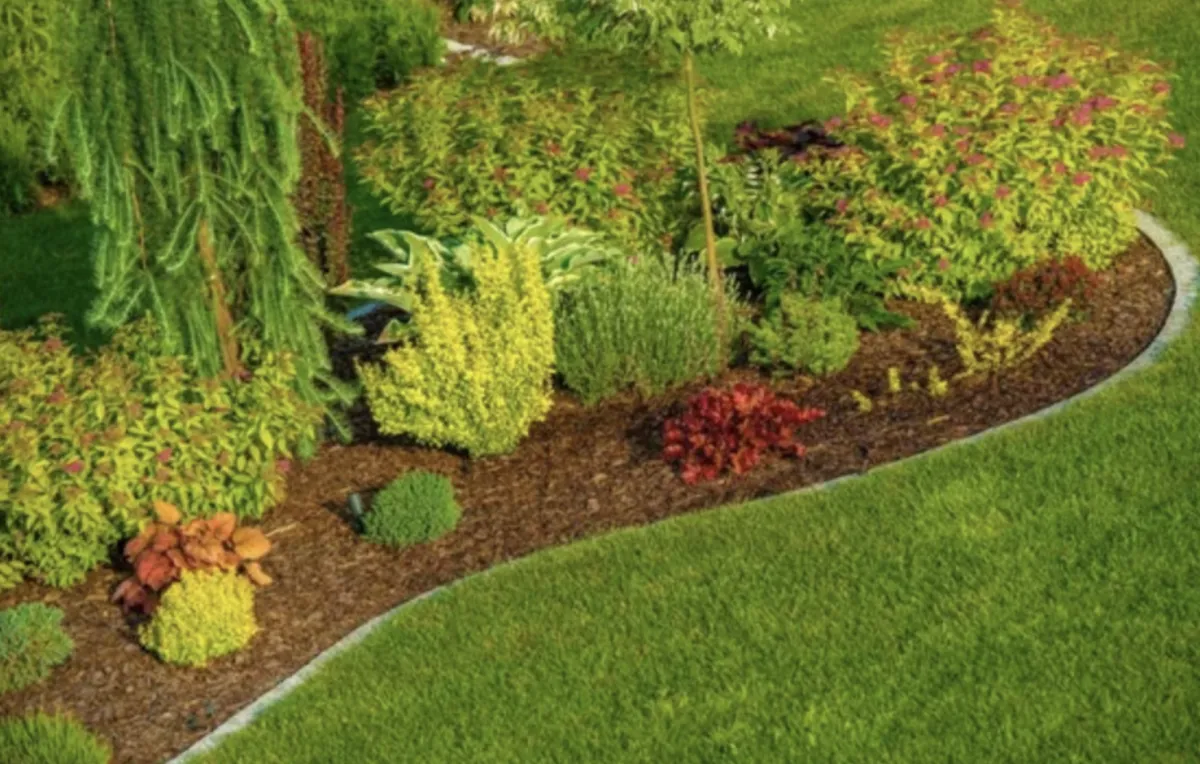

See What Our Customer Say About Us
Sarah M., Fort Worth, TX

“I can’t say enough good things about HF Landscape Design Fort Worth. They totally transformed our backyard into something out of a magazine — and they did it on time and within our budget. The team showed up early every day, cleaned up after themselves, and really listened to what we wanted. You can tell they actually care about the little details, not just getting the job done. Our neighbors keep stopping by asking who did the work — we tell everyone to call HF Landscape Design. Best decision we made for our home!”
Daniel R., Fort Worth, TX

“HF Landscape Design Fort Worth really blew us away. We had a plain front yard before, and now it looks like something you’d see in a design show. They helped pick the right plants for the Texas heat and even added lighting that makes the place glow at night. Super easy to talk to and very professional — they made the whole thing stress-free. We’d hire them again in a heartbeat.”
Megan & Tyler H., Fort Worth, TX

“Our backyard was just dirt and weeds before HF Landscape Design came in. Now it’s the spot where we spend every weekend with friends. They built a patio, added flower beds, and somehow made it all feel natural like it was always meant to be there. You can tell they love what they do — every detail was perfect. Highly recommend them to anyone in Fort Worth wanting a yard they’ll actually use.”
Get Professional Stone Walkway Installation
Stop dealing with muddy paths, inadequate circulation, or settling walkways. Get professional stone walkway installation creating safe, attractive paths for Fort Worth properties.
Call (817) 580-3329 to schedule stone walkway installation consultation. We'll design custom paths meeting your circulation needs and install them properly ensuring stability and beauty.
Service Areas: Fort Worth, Tanglewood, Ridglea Hills, River Crest, Westover Hills, Berkeley, Monticello, Mistletoe Heights, and surrounding communities.
Frequently Asked Questions
What is the average cost of landscape design?
Landscape design costs in Fort Worth typically range from $2,000 to $8,000 depending on property size—project complexity—level of detail required. Simple front yard designs for smaller properties might run $1,500 to $3,000. Comprehensive landscape plans for larger properties with detailed planting plans—hardscape designs—irrigation layouts—lighting plans usually cost $5,000 to $10,000 or more. We typically credit design fees toward installation if you proceed with us for the work. Design-only services cost more since we're not recouping fees through installation. Most clients in areas like Tanglewood or Westover Hills invest in detailed designs because their properties warrant professional planning. Newer neighborhoods with simpler yards might need less extensive design work.
What does it cost for a landscape design?
Design fees depend on project scope and what you need included. Basic conceptual designs showing general layout—plant groupings—hardscape locations run $1,500 to $3,000 for typical residential properties. Detailed construction-level plans with exact plant specifications—hardscape dimensions—grading plans—irrigation zone maps cost $4,000 to $8,000 or higher for complex projects. Commercial landscape design involves additional complexity and typically costs more. We discuss your specific needs during initial consultation and provide design fee quotes based on actual scope. Design fees get credited toward installation when you hire us for the work. Fort Worth properties with challenging conditions—significant slopes—drainage issues—often need more detailed planning which affects design costs.
What is the difference between a landscape architect and a landscape designer?
Landscape architects have formal education—state licensing—ability to stamp engineering drawings for permits. They handle complex projects requiring grading engineering—structural calculations—commercial site development—regulatory compliance. Landscape designers focus on plant selection—aesthetic layout—residential design without engineering components. In Fort Worth, landscape architects are required for certain commercial projects—retaining walls over specific heights—projects needing engineered drainage solutions. Residential projects usually work fine with landscape designers unless you've got significant slope issues—major grading needs—structures requiring engineering stamps. Landscape architects cost more but bring technical expertise for complex projects. Most residential landscapes in neighborhoods like Arlington Heights or Ridglea work well with landscape designers. Larger estates or properties with serious site challenges benefit from landscape architectural services.
Why is landscape design so expensive?
Professional landscape design involves considerable time—expertise—detailed planning work. Designers spend hours on site assessment—measuring—analyzing drainage and sun patterns—researching plant options for specific conditions. Creating scaled plans requires CAD software skills—design knowledge—understanding of Fort Worth's climate and soil conditions. Good designers prevent expensive installation mistakes—plant failures—drainage problems that cost far more to fix later. You're paying for years of experience knowing what works in North Texas clay soil—which plants survive July heat—how to design irrigation zones efficiently. Design fees also cover revisions—client meetings—coordination with contractors during installation. Cheap or free designs often mean cookie-cutter plans—inexperienced designers—or design costs hidden in inflated installation prices. Professional design upfront saves money long-term by getting things right the first time.
What is the rule of 3 in landscaping?
The rule of three suggests planting in odd-numbered groups—typically three plants—creates more natural and visually appealing arrangements than even numbers. Three plants or features create triangular compositions—visual interest—balance without formal symmetry. This applies to groupings of the same plant variety or repeating design elements throughout the landscape. In Fort Worth landscapes, you might see three crape myrtles anchoring a bed—three groupings of ornamental grasses—three boulders in a natural arrangement. The rule helps avoid the static look of paired plantings or single specimens. Works for plants of various sizes—repetition of colors—hardscape feature placement. Not a strict requirement but a helpful design principle creating more dynamic landscapes. We use the rule of three alongside other design principles—proper spacing—mature size consideration—Fort Worth-appropriate plant selection.
What is a realistic landscaping budget?
Realistic budgets for Fort Worth landscape projects typically start around $10,000 for basic front yard renovations and run $20,000 to $50,000 for complete front and backyard transformations with hardscaping. Simple refreshes—new plants—mulch—irrigation repairs might cost $5,000 to $8,000. Projects including patios—retaining walls—outdoor kitchens—extensive plantings easily reach $50,000 to $100,000 or more. Budget depends on property size—existing conditions—how much hardscape you want—plant material quality and maturity. Fort Worth's clay soil often requires additional drainage work affecting costs. Established neighborhoods like Monticello with mature landscapes might need less work than new construction in Walsh Ranch starting from dirt. Quality materials and experienced installation cost more upfront but last longer and perform better in our climate.
